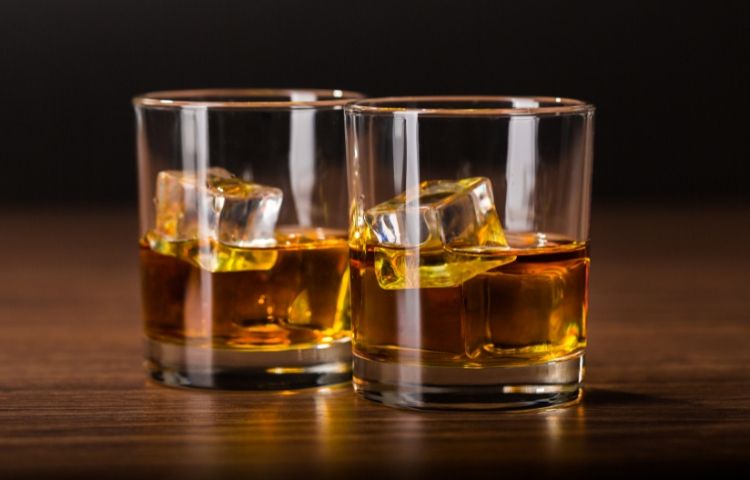Quick Take: Why ENA is the Quiet Backbone of Booze
Extra Neutral Alcohol (ENA) isn’t just about liquor—its influence goes far beyond that.
It’s the ultra-pure, colorless alcohol used in the finest spirits, perfumes, cosmetics, and even pharmaceuticals.
Behind every crisp vodka or premium whisky, ENA is the silent ingredient doing the heavy lifting.
And in India, this high-grade alcohol is experiencing a quiet revolution.
The Heart of Purity: Understanding ENA Like Never Before
Before you take your next sip of gin or dab on a refreshing cologne, pause for a moment—chances are, Extra Neutral Alcohol (ENA) has played a starring role in that experience. Known for its crystal-clear appearance and lack of odor or taste, ENA is not your everyday ethanol. It’s purity in its highest form, typically derived from sugarcane molasses or grain.
India, one of the world’s largest producers of sugarcane, sits on a goldmine of ENA potential. But this isn’t just about scale. It’s about quality, innovation, and the quiet evolution of an industry that supports some of the most glamorous end-products in the world.
The Premiumization Wave: Consumers Want More Than Just Alcohol
What was once a price-sensitive market has matured into a taste-conscious one. Today’s Indian consumer knows their spirits—and they want them clean, refined, and internationally competitive. Whether it's a glass of craft vodka or a small-batch gin, the expectation for quality is rising.
According to Expert Market Research, India’s ENA industry is witnessing a remarkable shift, driven by increasing demand for superior quality, high-purity alcohol across beverage and non-beverage applications. Their analysis highlights key India Extra Neutral Alcohol (ENA) Market Trends, including rapid advancements in distillation technology, the growing shift from molasses-based to grain-based ENA, and a rising focus on sustainable production. Manufacturers are adapting quickly, streamlining supply chains, and scaling up output with sustainability at the core. This dynamic push is not just improving quality but also opening up new export avenues, making India a potential global hub for ENA in the coming years.
As this transformation unfolds, it's not just the liquor segment that benefits—pharmaceutical and personal care industries are also cashing in on this clean, high-quality ethanol base. The future of ENA in India is not just about quantity, but about consistency, global standards, and diversified applications.
A Silent Superstar in Your Everyday Life
You’ll rarely hear anyone talk about ENA, yet it’s present in everything from the glass of vodka at your weekend party to the hand sanitizer you used this morning. That’s the beauty of ENA—it’s invisible, odorless, and incredibly versatile. In the luxury world, it’s the core of perfumes and personal care products. In healthcare, it's a critical base for antiseptics and syrups. And, of course, in the alcohol industry, it forms the very foundation of every premium spirit label on the shelf.
Unlike traditional ethanol, ENA is extra-purified, undergoing repeated distillation processes that leave behind any trace of impurities. That’s why premium beverage brands obsess over their source and production. It’s not just alcohol—it’s an experience enhancer.
What’s Brewing in India’s ENA Landscape?
India’s ENA story is one of quiet but consistent transformation. The country has been refining its production methods, investing in modern distillation technologies, and developing grain-based alternatives that deliver even cleaner results than molasses-based production.
While molasses still dominates the market due to the vast sugarcane belt in states like Uttar Pradesh and Maharashtra, there’s a visible shift towards grain-based ENA, especially among premium liquor makers. Consumers are demanding better-tasting, smoother spirits, and manufacturers know that begins with better ENA.
Perfumes, Pharma, and Beyond: ENA’s Unexpected Applications
Imagine the soft mist of a luxury perfume. The sleek glide of a shaving cream. Or even a cold syrup you take when unwell. Behind each of these products lies the pure, neutral base of ENA. It acts as a carrier, stabilizer, and sometimes the main active agent.
India’s personal care sector, currently booming with demand for homegrown luxury brands, is tapping into ENA like never before. Its ability to blend effortlessly with essential oils and actives makes it indispensable in this space. In pharma, the post-pandemic world has brought renewed attention to sanitization, hygiene, and ethanol-based solutions—further driving the relevance of ENA.
The Sustainability Question: Cleaner Alcohol, Greener Future
It’s not just about being neutral anymore—it’s about being sustainably neutral. As the country moves toward cleaner production processes, distilleries are investing in wastewater treatment, biomass energy, and carbon offsetting. Grain-based ENA production, which is often less polluting than molasses-based methods, is growing rapidly.
Consumers and brands alike are becoming eco-conscious, and that means even the “invisible” ingredients are under scrutiny. ENA manufacturers in India are now working under tighter regulations and cleaner mandates, and the results are evident—not just in emissions, but in the purity of the end product.
Looking Ahead: ENA’s Unwritten Future in India
The future of India’s ENA industry isn’t about whether it will grow—it’s about how it will grow. The spotlight is shifting to high-purity standards, ethical sourcing, and scalability. From new-age gin distilleries in Goa to Ayurvedic product makers in Kerala, everyone wants a piece of ENA—and not just any ENA, but the cleanest, purest form.
What was once an unnoticed industrial byproduct is now a hero ingredient across multiple billion-dollar sectors. And as consumer awareness rises, so does the demand for transparency and quality. ENA is stepping into that role—quietly but powerfully.
